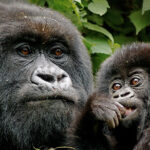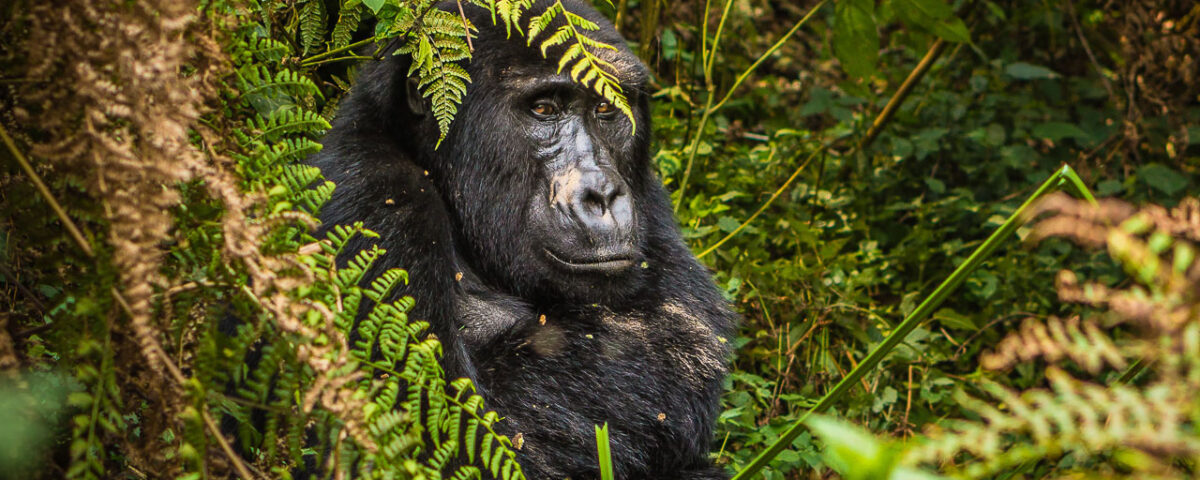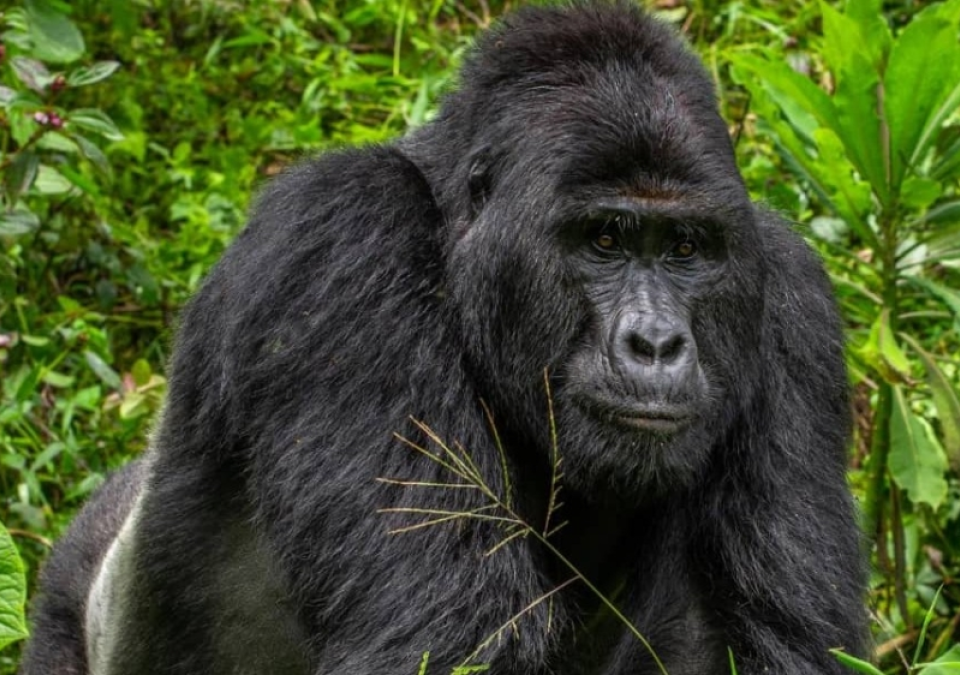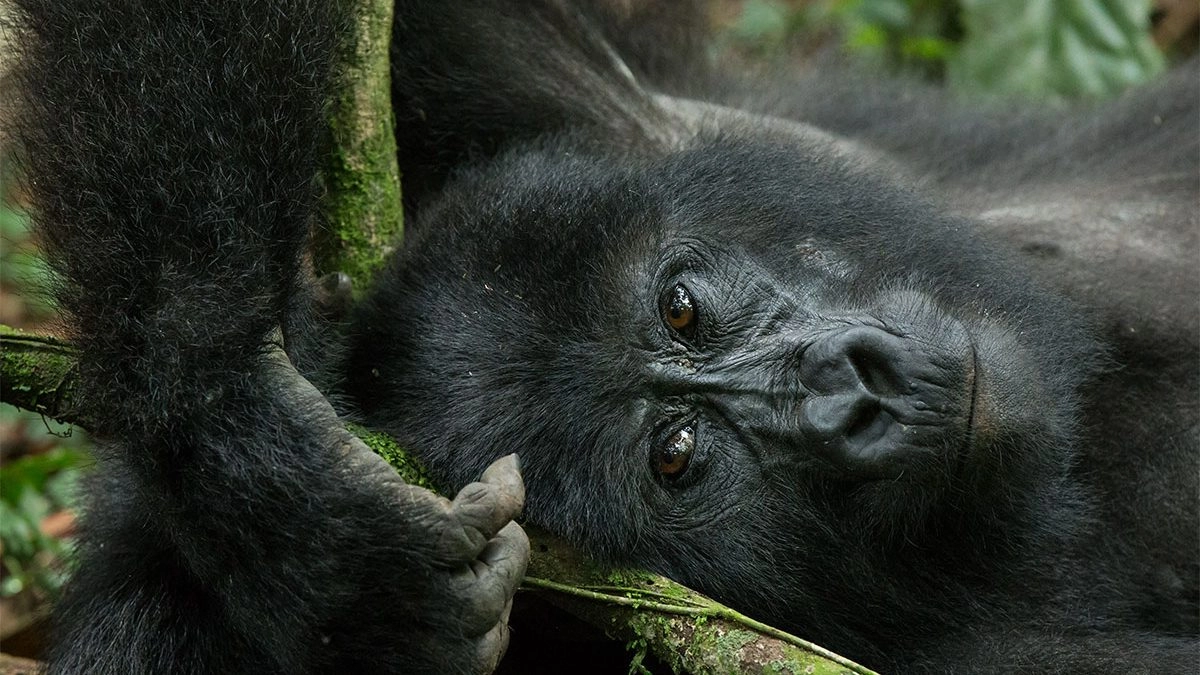
5 Essential Tips for Photographing Mountain Gorillas
August 23, 2025
Uganda Gorilla Trekking from Vietnam Through Kigali Rwanda
August 25, 2025Uganda Gorilla Trekking from Vietnam – The Ultimate African Wildlife Adventure
A Uganda Gorilla Trekking from Vietnam is a once-in-a-lifetime adventure, blending extraordinary wildlife encounters with immersive cultural experiences. Travelers often wonder, “How can I see Uganda’s mountain gorillas efficiently from Vietnam?” The journey typically begins with an international flight to either Entebbe International Airport (EBB) in Uganda or Kigali International Airport (KGL) in neighboring Rwanda. Choosing the most convenient route affects travel time, costs, and overall comfort, with Kigali offering slightly shorter access to Uganda’s gorilla parks.
Uganda’s Bwindi Impenetrable National Park and Mgahinga Gorilla National Park are among the few places in the world where mountain gorillas roam freely. Trekking in these parks allows visitors to observe gorilla families in their natural habitat, learning about their behavior, diet, and social structure. Beyond the gorillas, the dense forests and highland landscapes showcase Uganda’s rich biodiversity, including rare primates, exotic birds, and vibrant flora. Additionally, the experience integrates local culture, offering opportunities to engage with Batwa communities, visit historical sites, and understand conservation efforts that sustain these endangered species.
Why Choose Uganda for Gorilla Trekking from Vietnam?
Choosing a guided tour through a trusted operator like Ovacado Adventures ensures seamless logistics, including permits, transport, accommodation, and expert guiding. This combination of wildlife adventure, cultural immersion, and professional organization positions travelers to fully enjoy an unforgettable African safari experience.
Step 1: Booking Your International Flight
The first step in planning Uganda Gorilla Trekking from Vietnam is securing a reliable international flight. Direct flights from Vietnam to Entebbe are limited, so most travelers transit through hubs such as Doha, Istanbul, or Addis Ababa. Flight duration ranges from 15 to 20 hours depending on layovers, making early booking essential to reduce travel stress and costs.
Some travelers opt to fly into Kigali, Rwanda, for shorter land transfers to Uganda’s gorilla parks. From Kigali, a scenic 4-5 hour drive crosses the border into Uganda via the Cyanika or Katuna border posts, allowing more efficient use of time for trekking activities. Flying into Kigali also opens opportunities for combined Rwanda and Uganda itineraries, including visits to Volcanoes National Park, golden monkey tracking, and cultural tours of Kigali city. Planning flights in advance ensures access to the best fares, preferred flight times, and smoother transit experiences, allowing travelers to maximize their time in East Africa.
Step 2: Securing a Uganda Visa
A valid visa is required for travel to Uganda. Vietnamese citizens must check and apply for a Ugandan visa before departure. The process can be completed online through the Uganda eVisa portal, offering convenience and time savings compared to applying upon arrival.
For travelers combining Rwanda and Uganda, the East African Tourist Visa provides entry to both countries with a single application, simplifying logistics. This visa supports itineraries that include Kigali as a starting point for Uganda gorilla trekking, reducing border delays and ensuring a seamless journey. Applying in advance also allows travelers to verify requirements such as passport validity, health certificates, and payment processing, ensuring compliance with immigration regulations. Proper visa preparation ensures a stress-free arrival and allows you to focus fully on the wildlife adventure ahead.
Step 3: Booking a Gorilla Trekking Permit
A gorilla trekking permit is the most critical requirement for visiting Uganda’s Bwindi or Mgahinga Gorilla National Parks. For foreign non-residents, permits currently cost USD 800 per person and must be booked in advance due to limited daily availability.
Travelers frequently ask, “Can I obtain permits without a tour operator?” While possible, working with a licensed operator simplifies the process and ensures coordination with transportation, lodging, and guided treks. Each permit allocates a single visitor to a specific gorilla family, maintaining small group sizes for safety, minimal environmental impact, and optimal wildlife observation. Advance booking is especially important during peak tourist seasons when permits sell out quickly. By securing your permit early, you guarantee your chance to witness these extraordinary primates while benefiting from professional guidance throughout the trekking experience.
Step 4: Choosing a Park – Bwindi or Mgahinga?
Uganda offers two main gorilla trekking destinations: Bwindi Impenetrable National Park and Mgahinga Gorilla National Park. Bwindi is larger, home to multiple habituated gorilla families, and offers diverse trekking routes, making it ideal for first-time visitors seeking variety and accessibility. Mgahinga is smaller, less crowded, and offers the unique opportunity to see gorillas alongside the rare golden monkeys in a high-altitude volcanic landscape.
Visitors often ask, “Which park is better for a one-day trek?” Bwindi is more accessible for multi-day safaris and easier to reach via road transfers, whereas Mgahinga is ideal for travelers seeking an intimate experience with fewer tourists. Both parks provide well-trained guides, informative briefings, and structured encounters to ensure a safe, enjoyable, and educational experience. Selecting a park depends on travel preferences, fitness level, and the type of wildlife adventure desired.
Step 5: Booking Accommodation Near the Park
Accommodation near the gorilla parks caters to all budgets. Luxury lodges offer private villas with panoramic views of the Virunga Mountains, gourmet meals, and spa services. Mid-range lodges provide comfortable rooms, delicious local cuisine, and guided nature walks. Budget lodges maintain affordability while still offering essential amenities and convenient access to trekking trails.
Staying near the park headquarters allows early starts for gorilla trekking and reduces fatigue. Many lodges incorporate cultural programs, including visits to Batwa villages, traditional music performances, and craft workshops. Guests can learn about local lifestyles, culinary traditions, and historical heritage. Combining lodge comfort with cultural immersion enriches the overall safari experience and supports sustainable tourism by benefiting local communities.
Step 6: Preparing for the Trek
Preparation is key for a safe and enjoyable trek. Mountain gorilla treks involve hiking through dense, steep, and sometimes muddy rainforest terrain. Physical fitness, proper gear, and mental readiness enhance the experience. Essential items include sturdy hiking boots, long-sleeved shirts and pants, gloves, rain jackets, a waterproof backpack, sunglasses, and sufficient water.
Travelers must also adhere to health protocols to protect gorillas from human-borne diseases. Wearing masks, maintaining a safe distance, and avoiding direct contact are mandatory. Following guidelines ensures both visitor safety and the long-term preservation of these endangered primates. Mental preparation is equally important, as trekkers navigate unpredictable forest conditions while remaining patient and observant. Proper preparation maximizes the likelihood of a successful, immersive encounter with mountain gorillas.
Step 7: The Gorilla Trekking Experience
Gorilla trekking begins early in the morning with a briefing by park rangers. Groups of eight visitors are assigned to specific gorilla families to minimize environmental impact and ensure intimate viewing opportunities.
Hiking through the rainforest, trekkers encounter diverse wildlife, including exotic birds, primates, and unique plant species. The anticipation of locating a gorilla family adds excitement to the trek, which can last from one to six hours depending on terrain and gorilla movements. Once located, visitors spend one hour observing and photographing the gorillas in their natural habitat. This experience provides a rare opportunity to witness social interactions, play, and foraging behaviors up close. Rangers provide educational insights on gorilla ecology and conservation throughout the trek, making it both thrilling and informative.
Step 8: Cultural Experiences Around the Parks
Uganda offers more than gorilla trekking. Cultural experiences enhance safari itineraries, including visits to Batwa villages, where visitors learn traditional music, dances, and artisanal crafts. Local markets and tea or coffee plantations provide additional immersion, revealing daily life, agricultural practices, and regional cuisine.
Combining cultural activities with wildlife encounters offers travelers a holistic experience. It also fosters meaningful interaction with local communities and supports conservation initiatives. For example, many Batwa projects receive funding from tourism activities, ensuring that visitor engagement directly benefits community development. These experiences make a Uganda safari more than just a wildlife adventure; it becomes a journey into the region’s history, culture, and traditions.
Step 9: Transport and Logistics
Ground transportation from Entebbe or Kigali is typically via 4×4 safari vehicles. The drive to Bwindi or Mgahinga passes through Uganda’s scenic highlands, with opportunities for stops at viewpoints, local villages, and roadside markets.
Border crossings between Rwanda and Uganda require documentation, including passports, visas, and permits. Tour operators handle all logistics to minimize delays, ensuring travelers reach the parks on time. Transport is coordinated with lodging schedules and trekking permits, creating a seamless travel experience. Efficient ground arrangements allow visitors to maximize time in the forest and enjoy additional wildlife or cultural activities without unnecessary stress.
Step 10: Post-Trek Considerations
After trekking, visitors return to their lodge or directly to the airport for departure. Multi-day tours allow relaxation, reflection, and engagement in supplementary activities such as birdwatching, guided forest walks, or local craft workshops. Travelers often ask, “What is the best way to end the safari?” Spending a night near the park provides time to enjoy the landscape, interact with guides, and absorb the experience fully before international travel.
Costs include the gorilla permit (USD 800), lodging, transport, meals, tips, and souvenirs. Multi-day safaris offer better value and a less rushed experience compared to one-day treks. Planning in advance ensures a memorable and comfortable conclusion to the adventure.
Step 11: Best Time to Visit Uganda
Dry seasons (June to September and December to March) provide the most accessible trails, optimal wildlife visibility, and comfortable trekking conditions. Wet seasons (April-May and October-November) offer fewer tourists and more intimate encounters but require preparation for slippery trails and rain.
Choosing the right travel period depends on visitor priorities: accessibility, crowd levels, and weather conditions. Proper timing ensures a safer, more enjoyable trek and enhances photography opportunities while observing gorilla behavior.
Why Uganda Gorilla Trekking from Vietnam is Unforgettable
Uganda Gorilla Trekking from Vietnam combines adventure, wildlife observation, and cultural immersion into a unique East African safari. Partnering with Ovacado Adventures ensures efficient travel, reliable permits, expert guiding, and comfortable accommodations.
Trekking mountain gorillas in Bwindi or Mgahinga, exploring Uganda’s highlands, and engaging with Batwa communities creates a holistic experience that supports conservation, educates visitors, and leaves lasting memories. For travelers seeking a transformative safari experience, this journey provides accessibility, adventure, and authenticity, establishing Uganda as a top destination for responsible wildlife tourism.




